MacPherson’s income—equivalent to over $750,000 a year today—afforded her access to the rarest luxuries during the 1920s, when excess was commonplace.
Unsurprisingly, she dressed accordingly.
(Image courtesy of Altadena Filming.)
The burgeoning motion picture industry was responsible for many of these fortunes, and distinguished itself as one of the few means through which women could gain the wealth and influence typically reserved for men. Jeanie MacPherson was one such woman, and is considered a rare female pioneer in the male-dominated film industry (ahem, Harvey Weinstein).
MacPherson’s income—equivalent to over $750,000 a year today—afforded her access to the rarest luxuries during the 1920s, when excess was commonplace. Unsurprisingly, she dressed accordingly.
- An I. Magnin silk velvet cape with articulated flowers and a coordinating Robert Anstead folding clutch of silk brocade and ostrich feathers. (1921-1925)
(Images courtesy of Black Cat Vintage.)
Despite being named for her husband Isaac, Mary Ann Magnin was the founder of luxury San Francisco retailer I. Magnin, which opened in 1876 and originally sold the custom baby clothes Mary Ann made herself. Luxury importer Robert Anstead sold fine silver, crystal and objets d’art from his boutique located in the Ambassador Hotel, Los Angeles.
- An Edwardian lingerie dress of crepe de chine, filet lace and net with matching lace-inset underslip. (1910-1915)
(Left and center images courtesy of Black Cat Vintage; right image courtesy of Brigham Young University Arts & Communication Archives.)
Often called pneumonia dresses for their weightlessness, lingerie dresses were popular warm weather garments from the late Victorian era through the 1920s. Not only did they employ breathable fabric, but their ample use of gauze, muslin and openwork lace also permitted a titillating glimpse of skin without revealing too much.
- A pale lavender linen and crochet lace chemise dress. (1925-1929)
(Left and center images courtesy of Black Cat Vintage; right image courtesy of Cecil B. DeMille Archives.)
Also popular warm weather attire, wispy linen tunics called chemises replaced lingerie dresses as the changing mores of the Jazz Age permitted sleeveless silhouettes and shorter hemlines.
- An authentic Japanese silk kimono with red lining. (1910-1915)
(Left and center images courtesy of Black Cat Vintage; right image courtesy of The Metropolitan Museum of Art.)
The debut of Sergei Diaghilev’s Ballets Russes in 1909 ignited a trend for painted silks, harem pants and lampshade dresses in Paris that soon spread to the United States. Designer Paul Poiret’s “Confucius Coat,” based on a traditional kimono, was the first of these garments to gain popularity and resulted in the acquisition of his and more traditional kimonos among the fashionable and well-heeled.
- A peach taffeta afternoon dress with silk flowers, smocked waist and gold lace inset. (1923-1927)
(Images courtesy of Black Cat Vintage.)
Similar to robes de style but without the interior scaffolding, afternoon dresses were a ladylike compromise between the fuller coverage of Victorian clothing and the boyish, emancipated silhouettes favored in the later 1920s. The materials and artistry used on this garment demonstrate exceptional technique, as the smocking and flowers were sewn entirely by hand.
- A jeweled and beaded Art Deco bodice with trailing side panels. (1928-1933)
(Images courtesy of Black Cat Vintage.)
A breathtaking example of Art Deco styling, this bodice combines minimalist angles, modernist cutouts and sumptuous embellishments like color-lined seed beads. The racer back detail reveals the era’s emphasis on athleticism in both men and women.
- A bead-crusted Nemser cocktail dress with iris and seashell detail. (1924-1928)
(Images courtesy of Black Cat Vintage.)
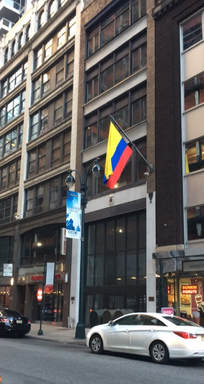 Nemser’s Gowns was located at 10 E 46th Street in Manhattan, now the site of the Colombian Consulate.
Nemser’s Gowns was located at 10 E 46th Street in Manhattan, now the site of the Colombian Consulate. From couture intricacy to materials, one of the most spectacular—not to mention rare—garments I have ever seen. Nemser garments are the very definition of couture: there exists only one of each design in the world. Astounding in its complexity, this dress features tens of thousands of minuscule, hand-strung beads sewn to resemble a field of irises blooming from its bead-fringed hemline. Three perfectly-placed beaded seashells offer modesty where necessary, while gold thread and metallic embroidery provide all-over sparkle.
Sadie Nemser’s dresses were exclusive enough to have been obtainable by only a handful of women in the world, and few remain today. While she favored silk velvet and slipper satin backgrounds for much of her breathtaking beadwork, this dress was made of whisper-weight silk chiffon; unsurprisingly, it is on the brink of total decomposition.
- A combed cotton monogram dinner napkin. (1920-1930)
(Images courtesy of Black Cat Vintage.)
What a shame if we don’t let them.

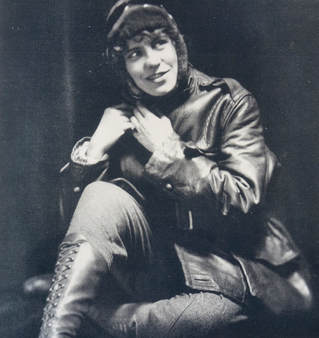
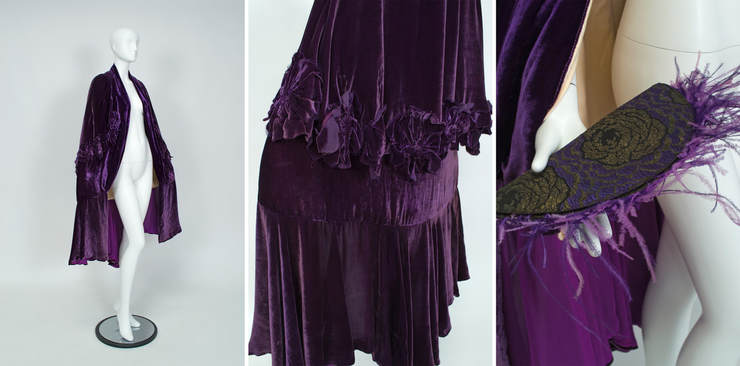

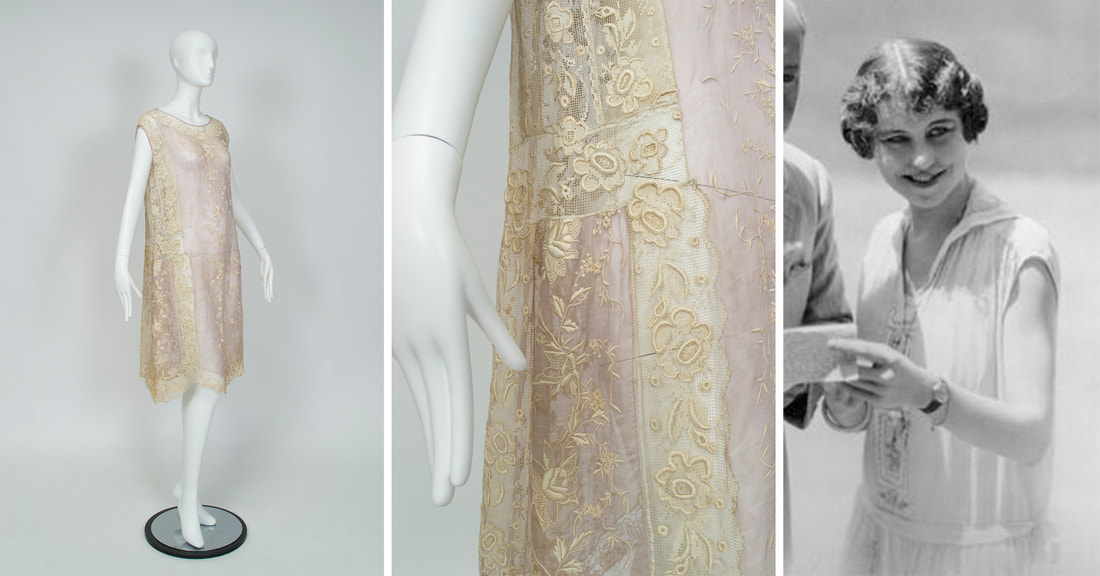
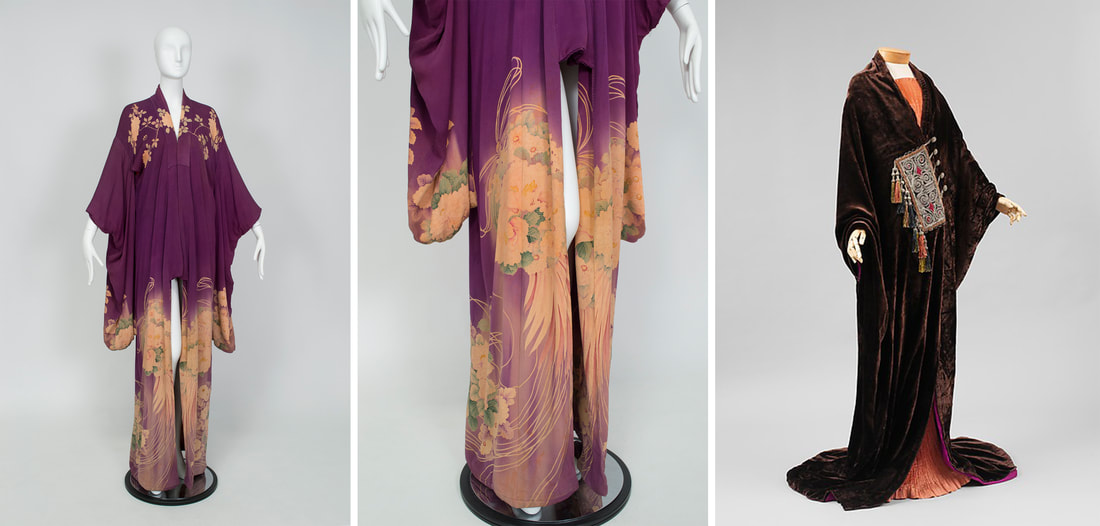
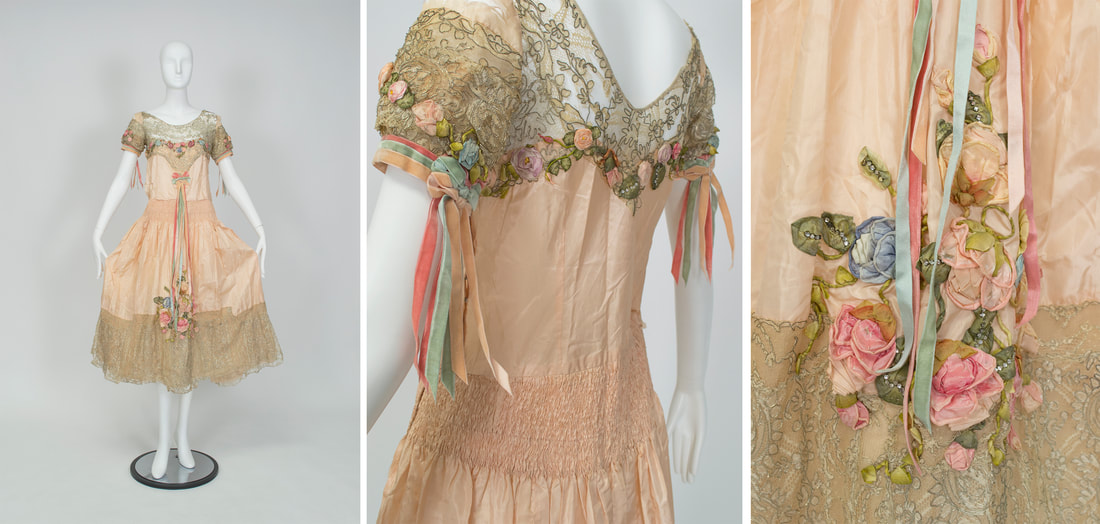

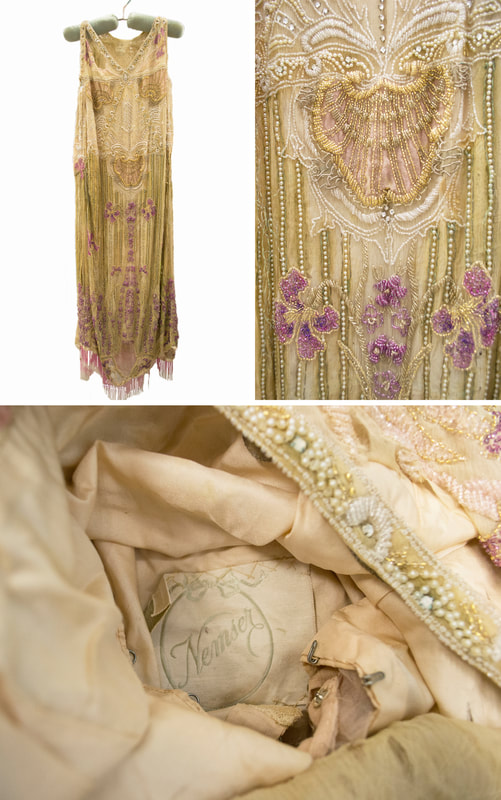
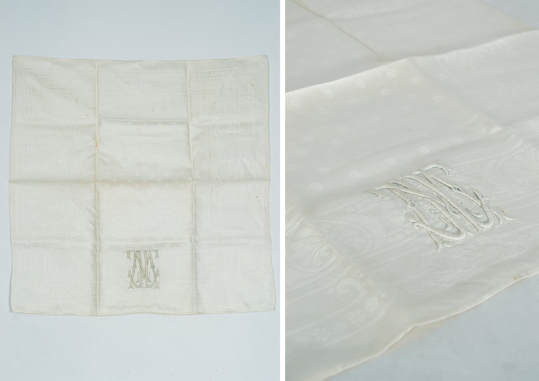
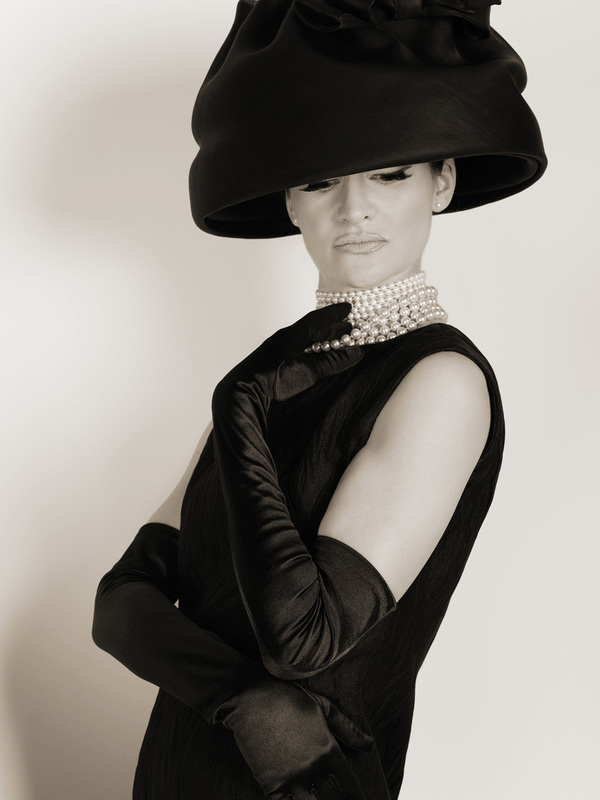
 RSS Feed
RSS Feed
